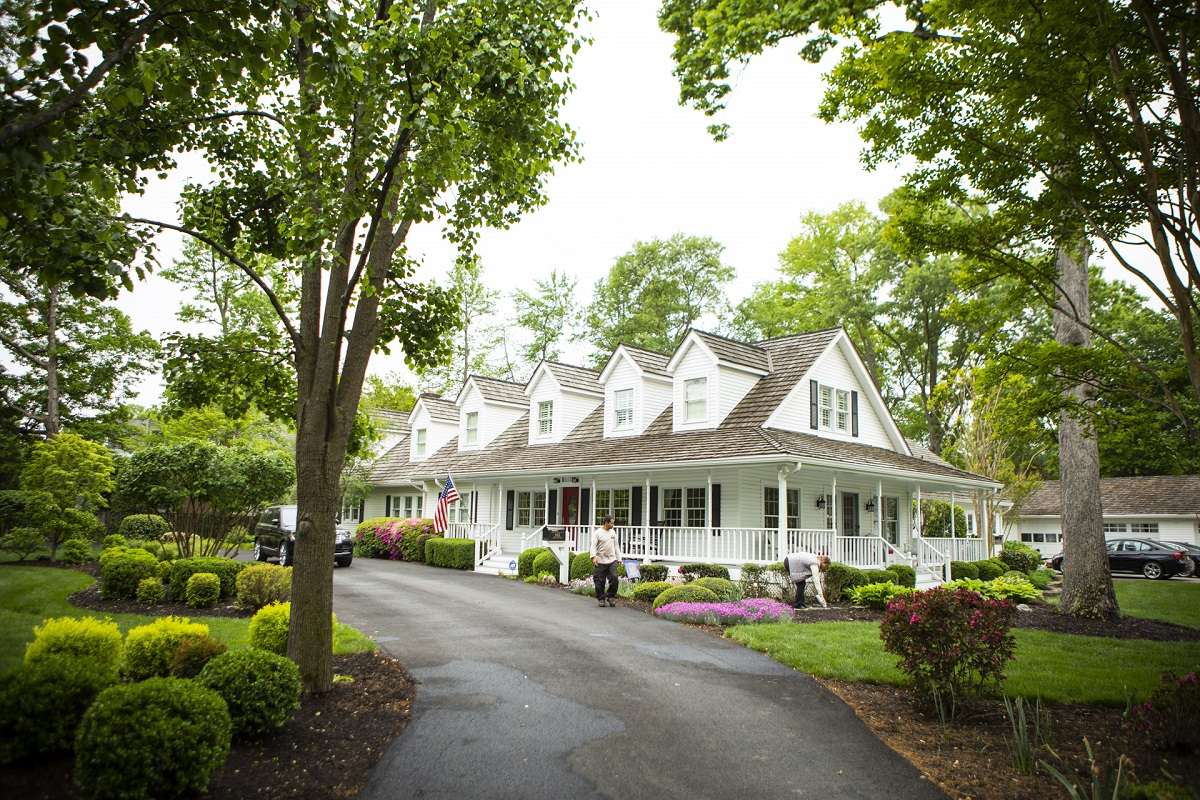

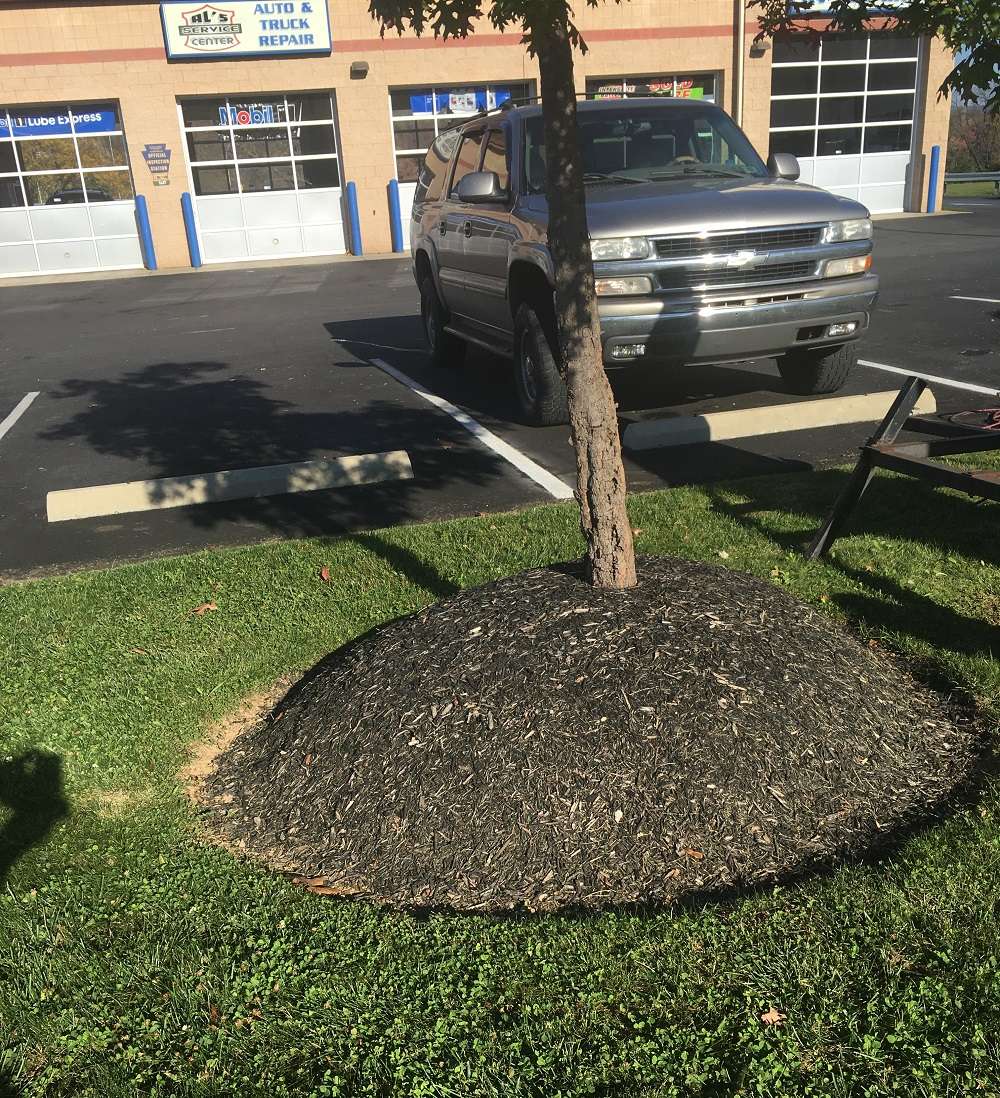
You don’t need to live in Hawaii to have your landscape harmed by volcanoes. It’s just in this case, we’re talking about the infamous mulch volcano.
If you have not heard of a mulch volcano before, it is basically when a tree ring is mulched in a way in which the mulch makes a big mound and is piled up against the trunk of the tree. Volcano mulching is actually quite common and though it is an improper practice, even some “pros” mulch this way. You might have even seen this at the local shopping center.
In fact, it’s so common that we often find homeowners believe this is the way in which their tree rings are supposed to be mulched!
But that’s not the case at all. Unfortunately, volcano mulching kills trees.
In this article, we’ll discuss volcano mulching in a bit more depth, why it’s bad for trees, and how you should be properly mulching. We’ll also talk about why it’s so important to find a landscape professional who is implementing proper strategies.
First and foremost, we want to be clear that mulching (when done properly) is a wonderful thing to do for your plants, including your trees. Mulch can improve the structure and fertility of the soil that your tree is planted in. Mulch also helps to increase water intake and slow evaporation, moderate soil temperature, and eliminate potential damage from mowers and trimmers.
It also has an aesthetic appeal to it!
The problem arises when mulch is installed incorrectly. Improper mulching around a tree can cause more harm than good.
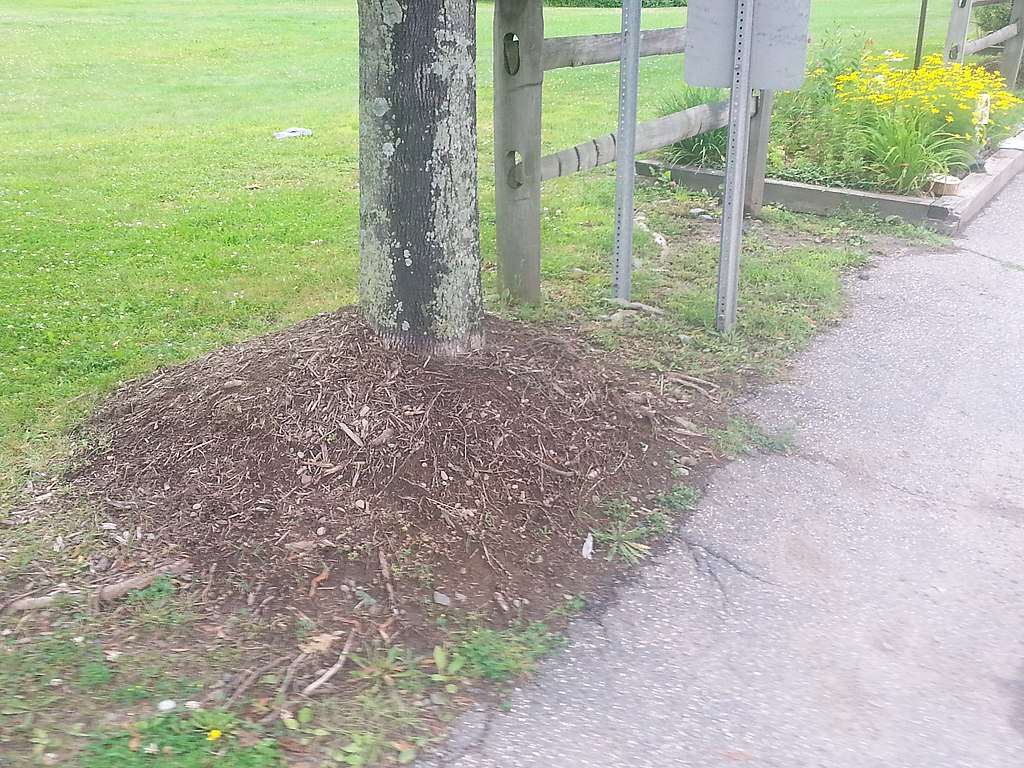
In the case of a mulch volcano, it’s the mulch piled up against the trunk of the tree that is the big problem. Mulch that is piled against a tree can encourage disease and decay because it never lets the tree trunk get the proper amount of air or sun (preventing it from drying out as it needs to). This moist and unhealthy environment can eventually lead to insect problems, fungal growth, and eventually cracks in the bark.
Too much mulch in this area can also prevent the tree’s roots from receiving enough oxygen. If the soil beneath the mulch remains too wet for too long, the roots can also begin to experience rot.
Trees sometimes respond to these conditions by growing new roots into the mulch (instead of deep down into the ground where they are meant to grow). But as the mulch degrades, these roots can become exposed.
Mulch volcano conditions can also cause the roots to grow around the tree trunk, merging with precious stem tissue. This can eventually begin to restrict vascular flow and start to strangle the tree (so to speak). This is called “stem girdling roots.”
As you might have guessed, with all of these issues, volcano mulching kills trees…eventually. It’s not an overnight process and it’s not going to happen to every tree.
If volcano mulching was already performed, and a tree is not severely damaged, in many cases it can be saved. But if a tree has suffered from volcano mulching conditions for many years and new problems have emerged (like decay or an insect infestation), a tree can really begin to decline.
If volcano mulching is bad, then what is the right way to mulch around a tree?
You might be surprised to learn that a mulch ring resembling a “donut” is the proper mulching method for a tree. The tree trunk should be at the center of the tree without any mulch piled up against it.
You’ll also want to avoid over-mulching. When it comes to mulch, more is not better. Excessive mulch is going to fail to decompose over time and you miss out on the benefits of adding nutrients into the soil.
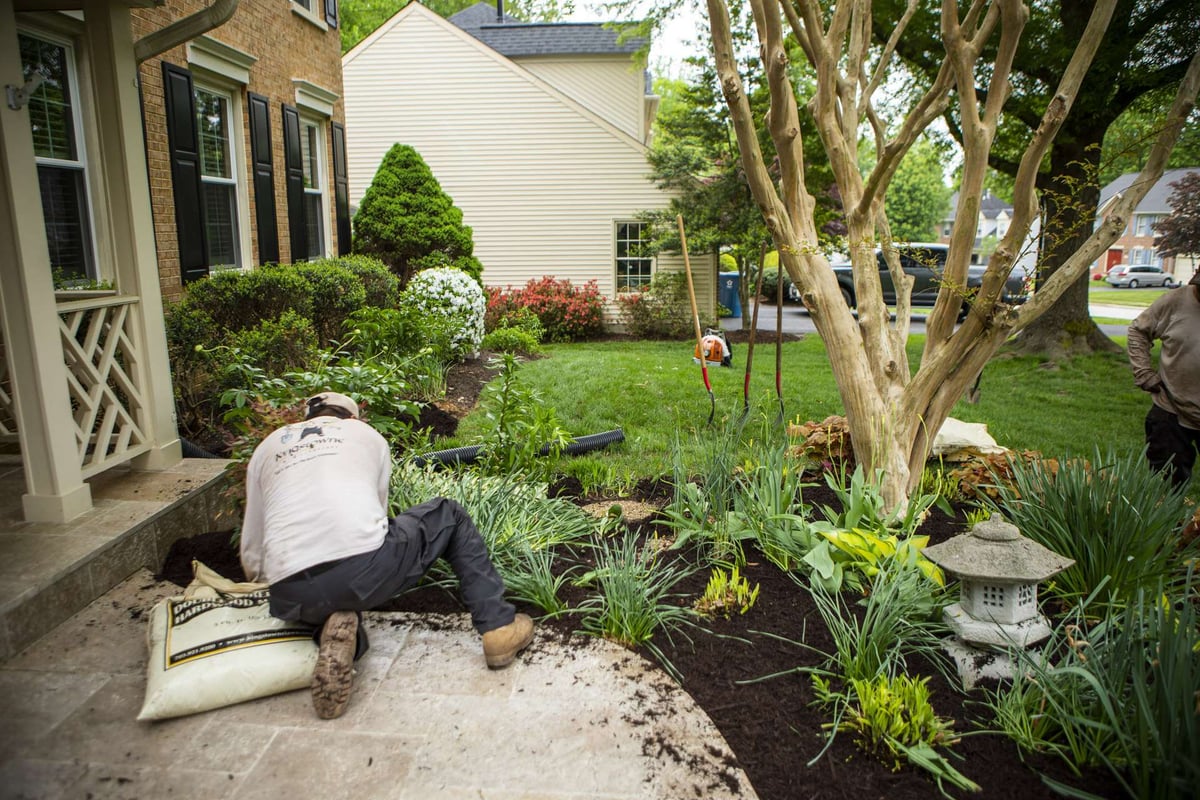
Over-mulching also contributes to water build-up. The mulch can become saturated, soggy, and ultimately water-logged. Rather than allowing the water to reach the tree’s roots, it just gets absorbed by the mulch.
Of course, on the flip side, you don’t want to under-mulch, either. Aggressive weeds can be strong enough to break through a thin layer of mulch, so you miss out on the weed suppression benefit. Plus, an under-mulched tree may not gain some of the other benefits like soil temperature regulation or preventing evaporation.
There’s a sweet spot for how much mulch is needed and it’s important that your tree is getting the proper amount.
As we mentioned earlier, volcano mulching is unfortunately a bad practice that even some “pros” have adopted. There are a couple reasons why this might happen.
For one, it has become such a prevalent way of mulching that landscape workers see it and assume it’s correct. Poor training or communication from management means that workers may never learn the “right way.”
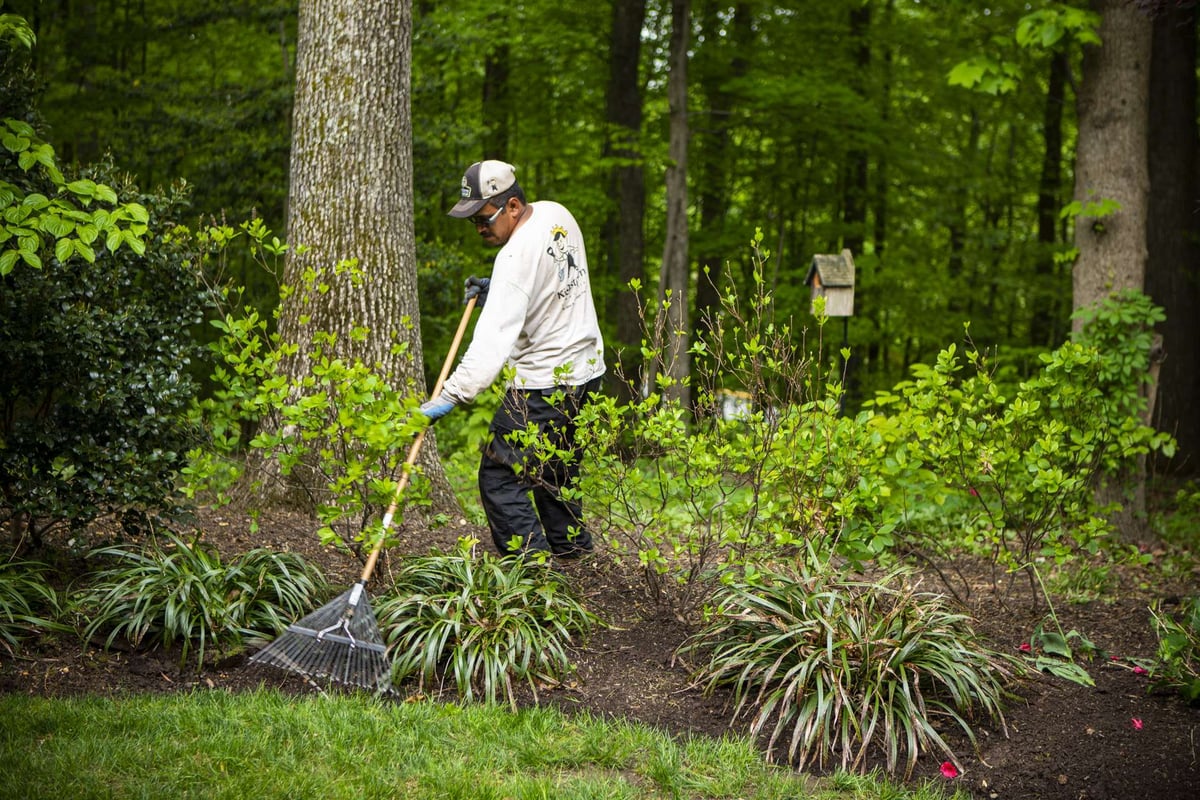
Another reason is simply that it’s sloppy work. It’s faster to just dump mulch around a tree and not take care to level it off and form a “donut.” When companies rush through a mulching job, they simply might not be taking the time and care necessary to get the job done right.
That’s why it’s important to choose a landscaping company that is not going to put poor practices, like volcano mulching, into action. You want to choose a landscaper who is committed to implementing proper landscaping practices and delivering the best results.
That also includes mulching with the proper amount and using a high-quality mulch.
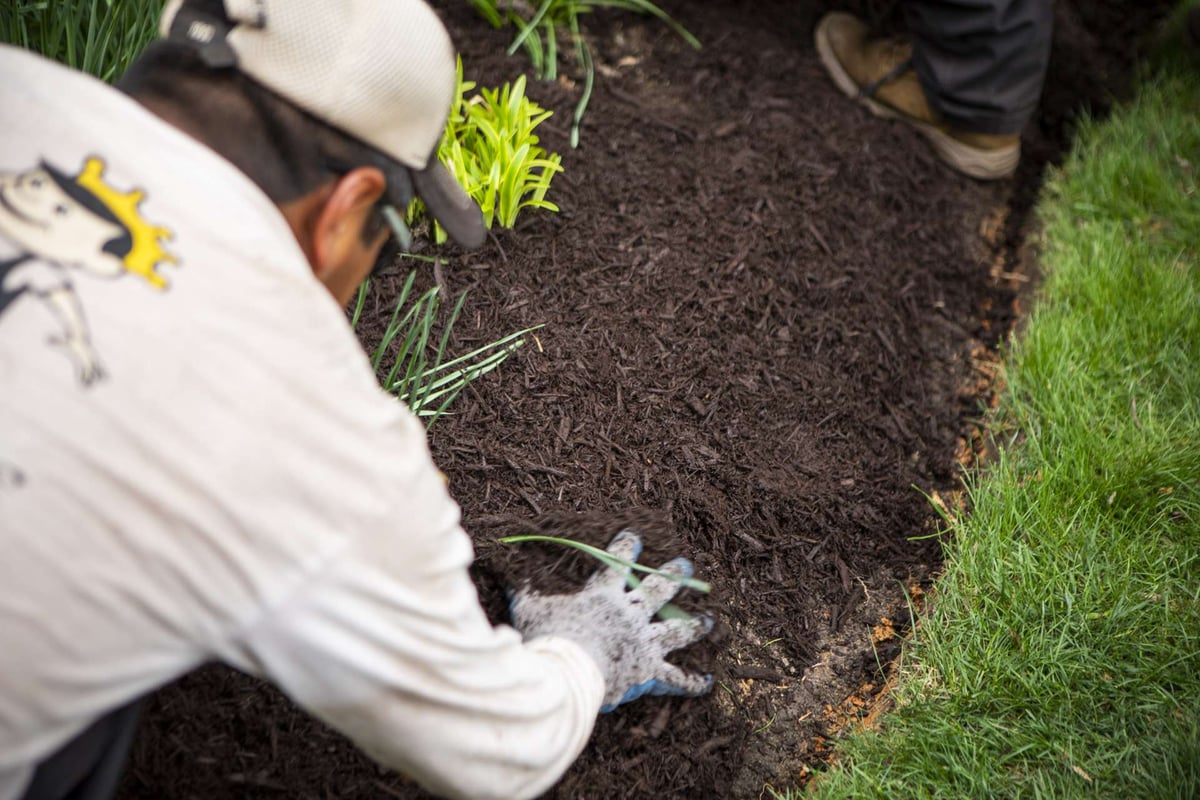
You should know that not all mulches are created equal.
For instance, the “free mulch” you can pick up from big piles you may have seen around the area is not quality mulch. But people do not always give this a lot of thought. The truth is, that mulch is likely filled with weed seeds and you’re going to be introducing weeds into your tree rings. On top of that, it may have diseases that could be spread to your tree or even attract pests.
Unfortunately, even some professional landscapers do not invest in high-quality mulches. This might be an area where they try to skimp and make more money—but it is a disservice to you.
At Kingstowne Lawn & Landscape, we are committed to best practices and using high-quality products.
The mulch that we use is double-shredded hardwood. It’s a dark brown colorized mulch that holds its color. When you see mulch that looks like it’s turning gray in the sun, you know it’s not a high-quality colorized mulch. But we often have homeowners tell us in awe that they can’t believe their mulch still looks great six months after we installed it.
It all boils down to helping you achieve the best results. By making a wise choice in mulching services, you can end up with beautiful tree rings that not only look great, but function properly, too. Instead of losing your trees to poor practices like volcano mulching, you can rest-assured that your landscape is in good hands.
Are you ready to feel confident you’ll get the best landscaping services at your Alexandria, Arlington, or Springfield, VA home? If so, request your consultation, get your customized plan, and relax as you get the royal treatment.
Image Source: Mulch Volcano

Since its founding, Krisjan has led Kingstowne Lawn & Landscape with a straightforward philosophy: treat every customer like the “only” customer. His passionate pursuit of excellent customer service has led to 28 successful years and a thriving company with over 85 employees. Since 1997, Kingstowne has helped thousands of homeowners in the Alexandria, Arlington, and Springfield, VA area get what they want - a worry-free property they can be proud of.


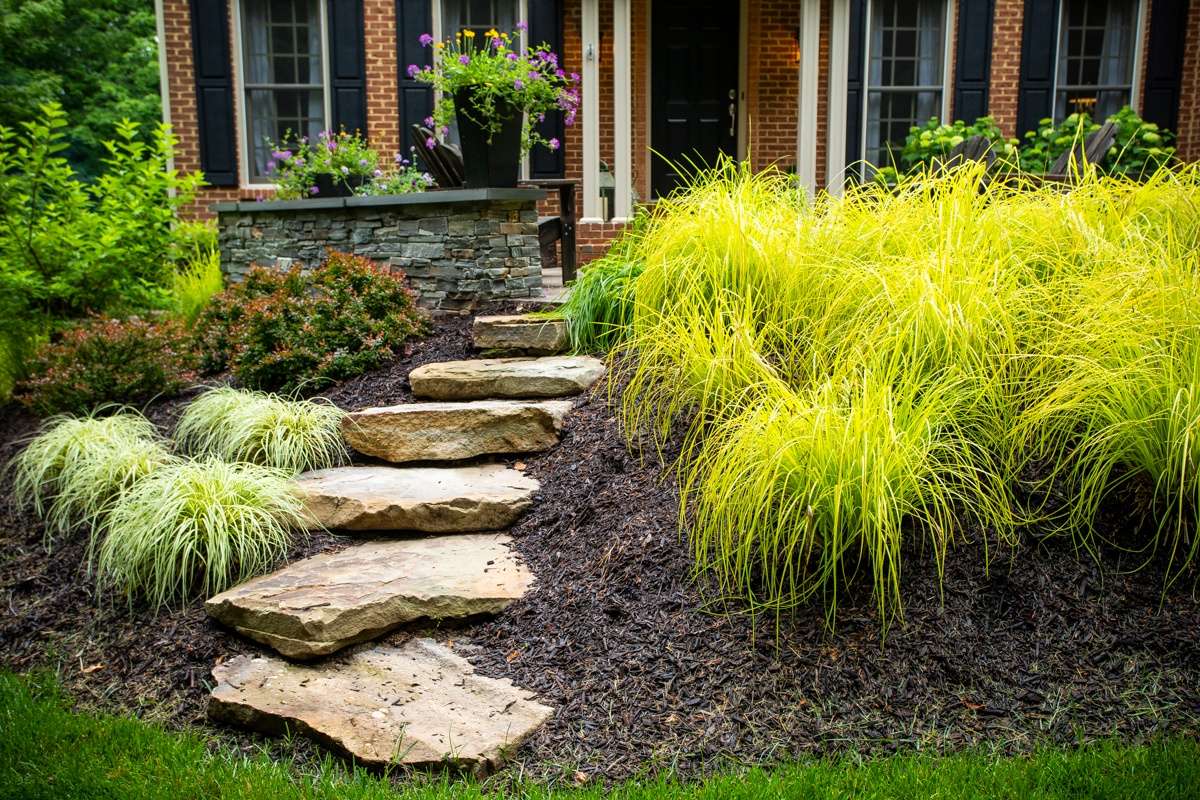

If You're Looking For a Sign, This is It.
Seriously, that lawn isn't getting any better on it's own. Mrs. Jones just called the HOA on you